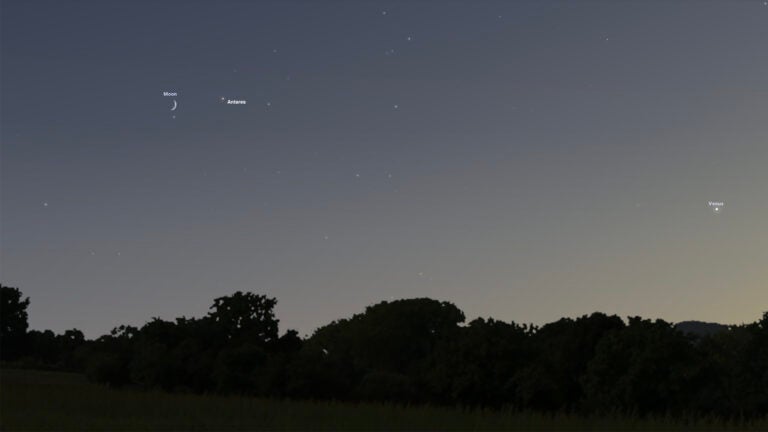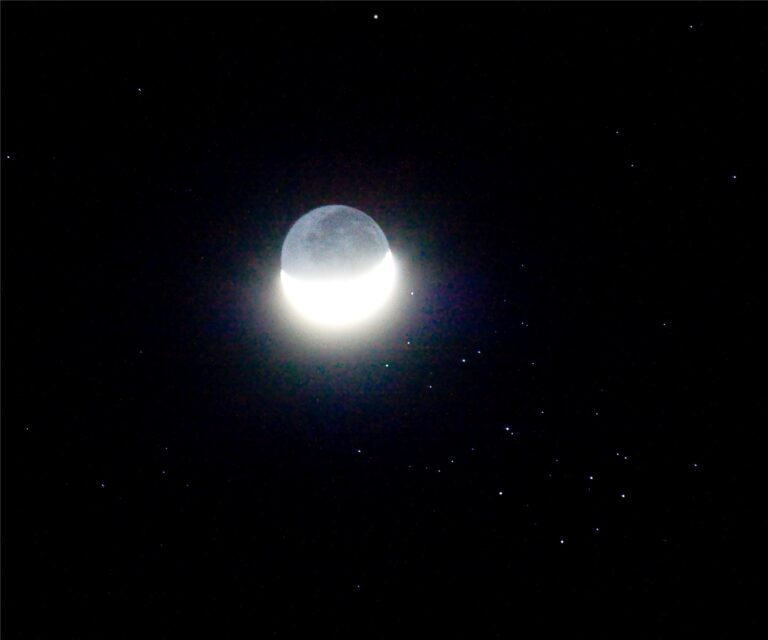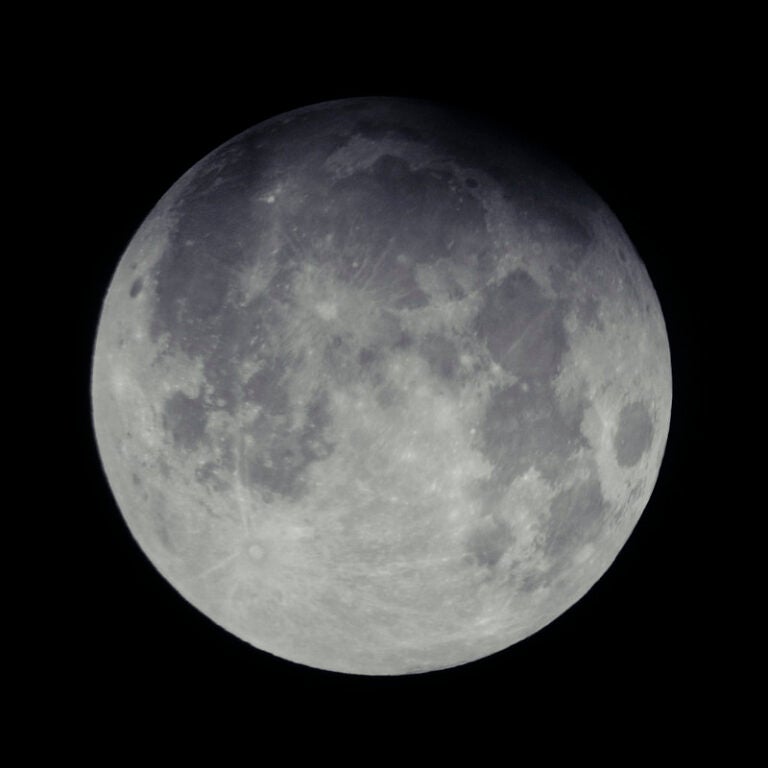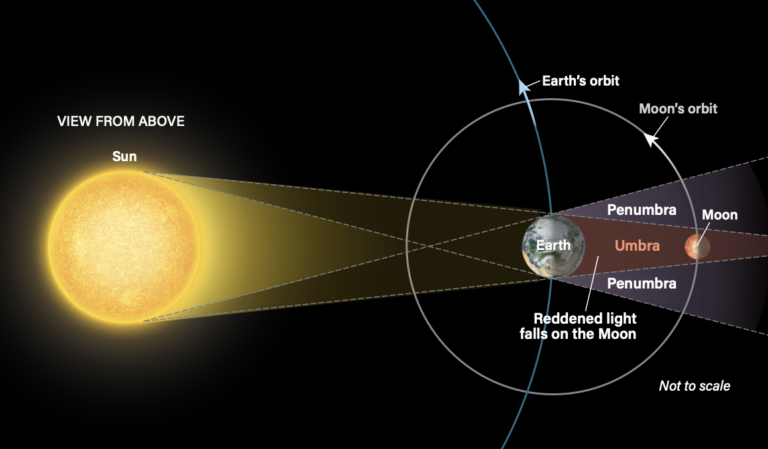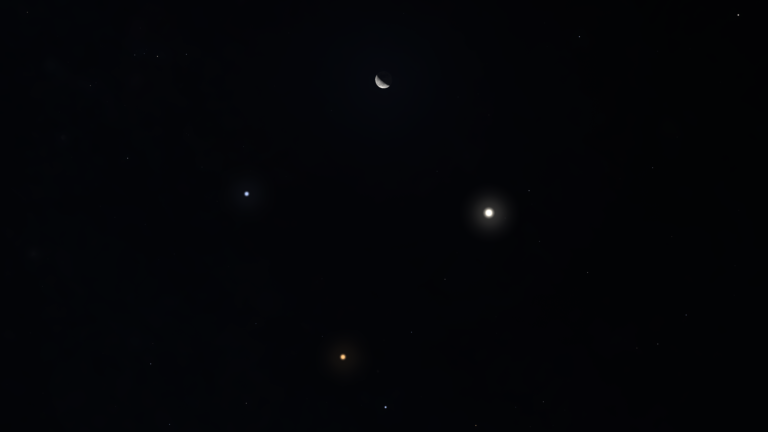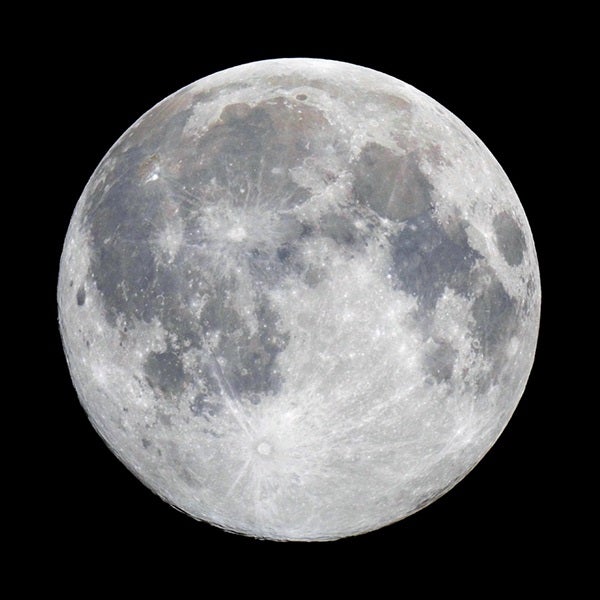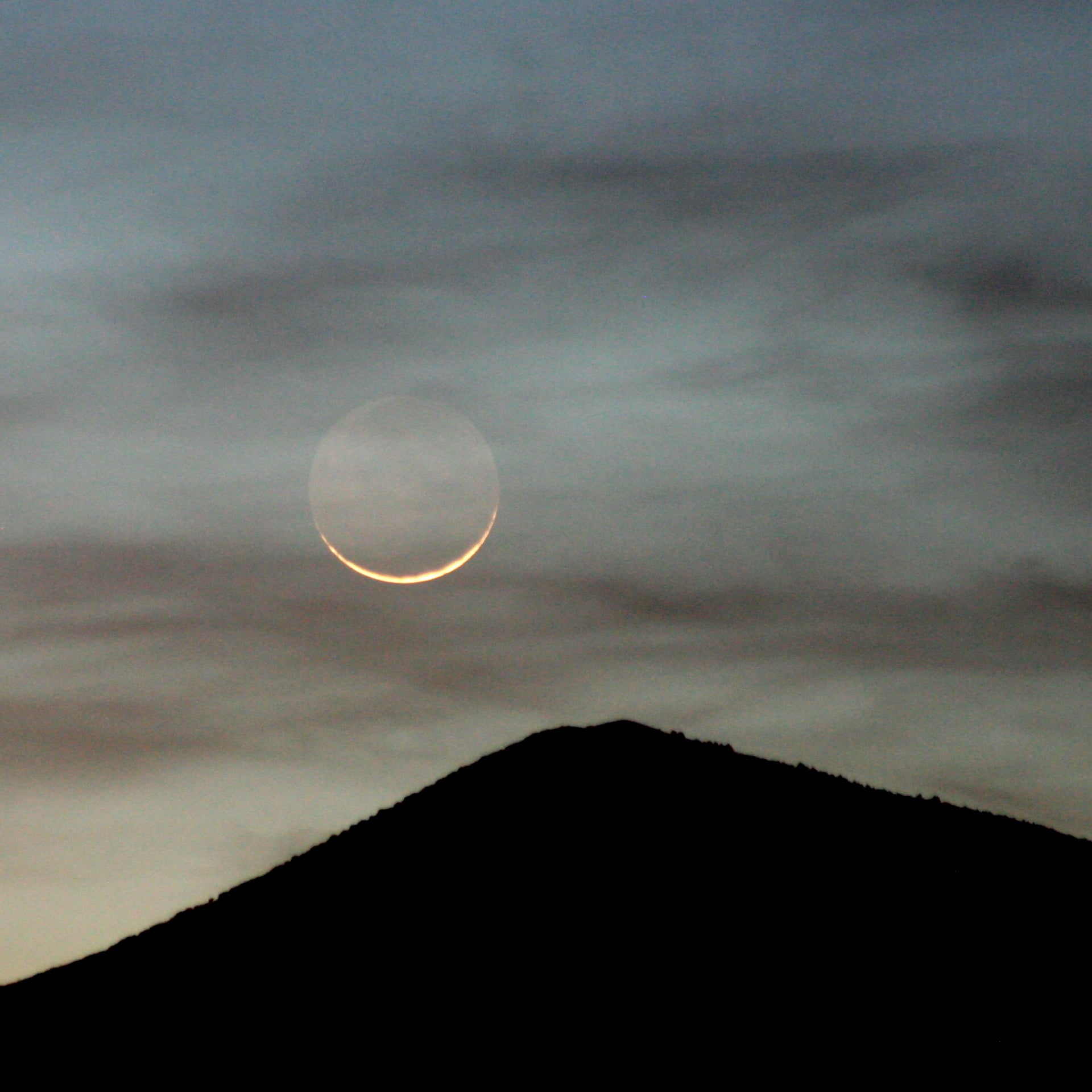
The Moon, Earth’s nearest celestial neighbor, has fascinated humanity for ages with its ever-changing phases. Each month, the Moon transitions through a series of distinct visual stages, providing a captivating and evolving spectacle in the night sky.
But why do these phases occur, and how do specific phases of the Moon contribute to rare phenomena such as eclipses? Let’s explore the science behind the Moon’s phases, each of their unique characteristics, and the critical role the Moon plays in lunar and solar eclipses.
Why does the Moon have phases?
The phases of the Moon are a result of the geometric interplay between the Sun, the Moon, and Earth. As the Moon orbits Earth, the nearside of the Moon always faces Earth. So as the Moon circles our planet, the amount of the Sun’s light striking the Moon’s nearside changes, causing varying portions of its face to be illuminated from our point of view.
It’s essential to remember the Moon does not emit its own light; instead, it reflects the light from the Sun. And the phases that we see are a consequence of the relative positions of the Sun, Moon, and Earth, which determine which parts of the Moon’s surface are simultaneously illuminated by sunlight and visible from Earth.
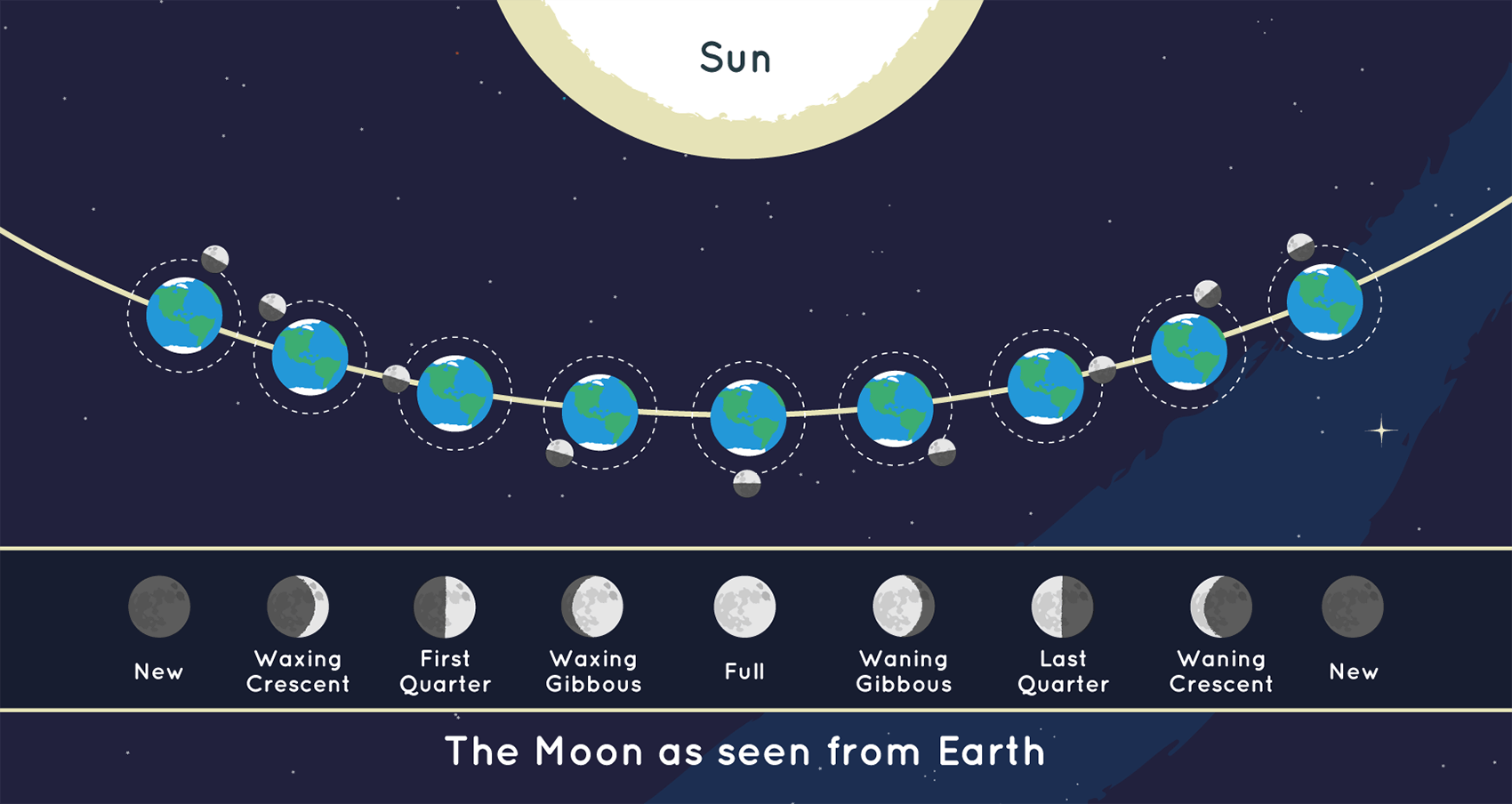
What are the Moon’s Phases?
The Moon’s phases represent the changing appearance of the lunar disk from Earth’s perspective. There are eight distinct phases the Moon goes through. Beginning with New Moon, they are:
- New Moon: The New Moon phase marks the beginning of the lunar cycle. During this phase, the Moon is positioned between the Earth and the Sun, leaving the side of the Moon facing Earth completely in shadow.
- Waxing Crescent: Following a New Moon, the waxing crescent phase first emerges as a thin crescent of light visible on the Sun-facing edge of the Moon.
- First Quarter: The First Quarter Moon is characterized by half of the Moon’s nearside being illuminated, forming a perfect half-circle when viewed from Earth.
- Waxing Gibbous: In the waxing gibbous phase, the Moon is past First Quarter but not yet Full. Most of the Moon’s face appears illuminated at this stage, with only a small crescent-shaped portion remaining in shadow.
- Full Moon: A Full Moon occurs when the Moon and Sun are positioned on opposite sides of Earth. This causes the entire face of the Moon to be illuminated by sunlight.
- Waning Gibbous: During this phase, the Moon is past Full but not yet at Third Quarter. Most of the Moon appears illuminated, with a small portion gradually darkening as the phase progresses.
- Third Quarter: The Third Quarter Moon is the opposite of the First Quarter Moon. Half of the Moon’s nearside is illuminated, forming a bright half-circle on the opposite side of the Moon as during First Quarter.
- Waning Crescent: As the Moon approaches the end of its repeating cycle, the waning crescent phase sees the Sun-facing edge of the Moon shrinking to a thin sliver of illumination.
The terms “waxing” and “waning” indicate the direction of change in the Moon’s phases. Waxing phases occur as the Moon progresses from a New Moon to a Full Moon, with the illuminated portion increasing. Waning phases occur as the Moon moves from a Full Moon to a New Moon, with the illuminated portion decreasing.
The Moon’s role in lunar and solar eclipses
The Moon plays a crucial role in the phenomenon of eclipses, both lunar and solar.
A lunar eclipse occurs when Earth is directly between the Moon and Sun, which only occurs during the Full Moon phase. If the alignment is just right during a Full Moon, the Moon will pass right through Earth’s shadow in space caused by sunlight washing over it. Such lunar eclipses can be spectacular (and hours-long) events, but even a temporary rust-colored Moon during a lunar eclipse fails to compare to the glory of a solar eclipse.
A solar eclipse occurs when the Moon passes precisely between Earth and the Sun, casting the Moon’s shadow on Earth’s surface. These awe-inspiring events can only happen during a New Moon phase, and all three celestial bodies must be in particularly perfect celestial alignment.
There are three types of solar eclipses: partial, annular, and total. In a partial eclipse, only a part of the Sun is obscured by the Moon. During an annular eclipse, the Moon covers the center of the Sun, leaving a bright ring of sunlight visible around the edges. In a total eclipse, however, the Moon entirely covers the Sun, casting a shadow that plunges a small portion of Earth into temporary darkness.
On April 8, 2024, North America will witness a total solar eclipse. During this event, the Moon will completely block the Sun, casting a narrow shadow path that treks its way up across the continent. This upcoming eclipse will provide a unique and unforgettable experience for the tens of millions of people living within the path of totality, offering a rare opportunity to witness firsthand the Moon’s role in this stunning celestial phenomenon.
The phases of the Moon and their role in solar eclipses showcase the intricate relationships between Earth, the Moon, and the Sun. Observing the Moon’s changing appearance and experiencing the spectacle of a solar eclipse serve as powerful reminders of the beauty and wonder of the cosmos. And the upcoming total solar eclipse in 2024 will provide an especially unique opportunity to appreciate the Moon’s vital role in creating one of nature’s most awe-inspiring events.



